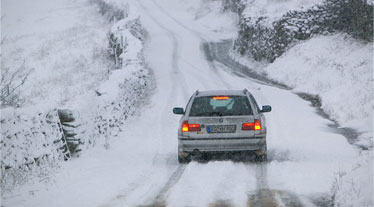Tips For Driving In The Winter

Winter driving is amongst the most hazardous experiences a road user will have to face and, as such, it should be approached with the correct amount of caution. Failure to do so can cause a range of problems, from mechanical issues such as failing brakes forcing you to fork out for brake repair in Victoria BC, through to much more major issues such as accidents with other road users.
Caution is the name of the game and it really helps to come prepared. Follow these tips and you will find that your winter driving is much improved.
Generally speaking the average car battery lasts for about five years. Because you will be putting extra demand on the battery when driving in the winter, thanks to increased use of wipers, lights and similar, there is more chance that it will run out during this period than any other.
As such you should keep in mind the age of your battery and, if you believe it may be coming to the end of its life, get the battery replaced. After all, you don’t want it to suddenly give out on you when you’re driving in difficult conditions.

There are plenty of things you should keep in your car just in case you end up in an emergency situation. Have a good stock of blankets and hot water bottles just in case you end up in a situation where your car breaks down and you need to keep warm.
It’s also worth keeping a few things to help with the running of the car. Scarpers and de-icers do a great job for improving visibility and antifreeze will ensure that your engine runs as well as possible in the difficult conditions. For the sake of a couple of dollars you could save yourself hundreds on repairs.
Driving in the snow or ice is extremely difficult, at least in comparison to regular road driving, as you will need to compensate for a number of factors that would not usually be an issue.
For example, approaching hills become much more hazardous in winter weather. Stopping and starting while driving uphill is not recommended so wherever possible wait until the person ahead of you has cleared the hill before making your own attempt. Having to stop will make it harder to start again and may even lead to your car slipping down the hill.
Similarly, going downhill also presents its own set of problems. As it is much more difficult to bring your car to a stop if it begins gaining momentum you must ensure that you do everything possible to keep the car moving slowly and in your control. Failure to do so may lead to the car picking up speed and crashing into whatever is at the bottom of the hill.
This can all be avoided if you take your vehicle into a tire shop where they can set you up with all seasons or winter tires, which will help your vehicle from spinning out of control of snowy or icy roads.
These are just a few of the essential tips for driving in difficult conditions. Keep them in mind during your next winter journey.
